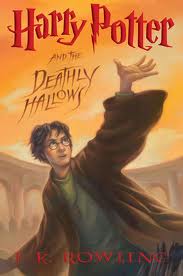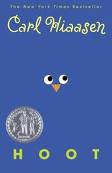Bibliographic Information: Krakauer, Jon. Into the Wild. Anchor Books, 1997. ISBN 978-0385486804
Genre: Non-fiction, Adventure, Adult crossover books.
Reading Level: Grades 7-12
Curriculum ties: Christopher McCandless, Hitchiking-US, Adventure, Alaska,Wayfaring life, West-Biography, Made into a movie.
Awards:Garden State Teen Book Award, 1999 Winner Non-Fiction New Jersey
Note: Made into a movie in (2007). Author of Into Thin Air (1997).
Reader’s Annotation: After graduating from college, Christopher McCandless embarks on an adventure from Atlanta to Alaska that he has wanted to take for years.
Plot Summary: Christopher McCandless was a typical student athlete who just finished college and is ready to take on the world, unfortunately it is not the world that his parents had in mind. Christopher was never felt that he had to identify with the material things that were provided for him by his family and now was his chance to live life for himself. Christopher cleared out his savings account which totaled about $24,000 and gave it to charity. Abandoning all his possessions, he began his journey to Alaska where he would live off the land and become one with nature. Along the way, he develops a new persona; the real him, adopts a new name; Alexander Supertramp, and befriends those who he most relates to; other vagabonds trying to find their way. When Christopher finally makes it to Alaska in the Spring, he is filled with a sense of peace and excitement but this is only the beginning of what proves to be a challenging feat.
Critical Evaluation: The author uses references to several classic novelists including Jack London, Leo Tolstoy and Henry David Thoreau as Christopher’s guides and references in his life which you can see by his actions and beliefs. Jack London’s book Call of the Wild was Christopher’s inspiration to become one with nature. This Naturalism philosophy is what he lived by in Alaska. Christopher also adopted a Tolstoyan renunciation of wealth and return to nature when he sold all possessions and went off the grid. The most constant influence would be that of Henry David Thoreau’s Transcendentalism, rebelling against what he saw as the current situation and trying to be different than that. A theme seen time and again, he rebells against his father’s work, his affluent life at home and then proceeds to change his name, identity and ultimately rebells against nature. This is a great way to incorporate some classic literature into a modern story.
Booktalking Ideas:
Do you think that McCandless was properly prepared to go on this journey?
2) Was McCandless of sound mind to go on this adventure? Was he suicidal? Mentally ill?
3) Discuss the significance of the relationship McCandless has with his pen-pal Wayne.
4) What influence does Jack London have on McCandless’ adventure? Survival skills?
Challenge Issues/ Defense:
Challenge Issues: none
Challenge Defense Ideas: There are no apparent challenge issues associated with this book. In the case that a challenge comes up, there are some things that you can do to start. You could read the book and become familiar with the content. Refer to the library collection development policy, and get reviews from reputable sources and teens that have read the book.
Why was this book included?: A gripping non-fiction account full of adventure and wonder.
Author Information: Mountain climber and writer Jon Krakauer was born in Brookline, Massachusetts in 1954. He was raised in Corvallis, Oregon from two years of age.
In 1976, Krakauer received a degree in Environmental Studies from Hampshire College in Massachusetts. He worked as a carpenter and fisherman and wrote articles on mountain climbing throughout the latter half of the 1970s. By 1980, he wrote regularly for Outside magazine and also wrote for such publications as National Geographic, Smithsonian, and Rolling Stone.
Krakauer but may be best-known for his book, Into Thin Air: A Personal Account of the Mt. Everest Disaster. In this book, Krakauer recollected his guided climb of Mt. Everest that was known as the 1996 Everest Disaster. Krakauer is also recognized for his 1996 book: Into the Wild. It spent more than two years on the New York Times bestseller list and became a movie in 2007. He also wrote When Men Win Glory in 2010.
(Bowker Author Biography. Retrieved from: https://sddp.sirsi.net/uhtbin/cgisirsi/?ps=z8ycJMz2mR/CENTRAL/143470071/9#syn_anotes)









